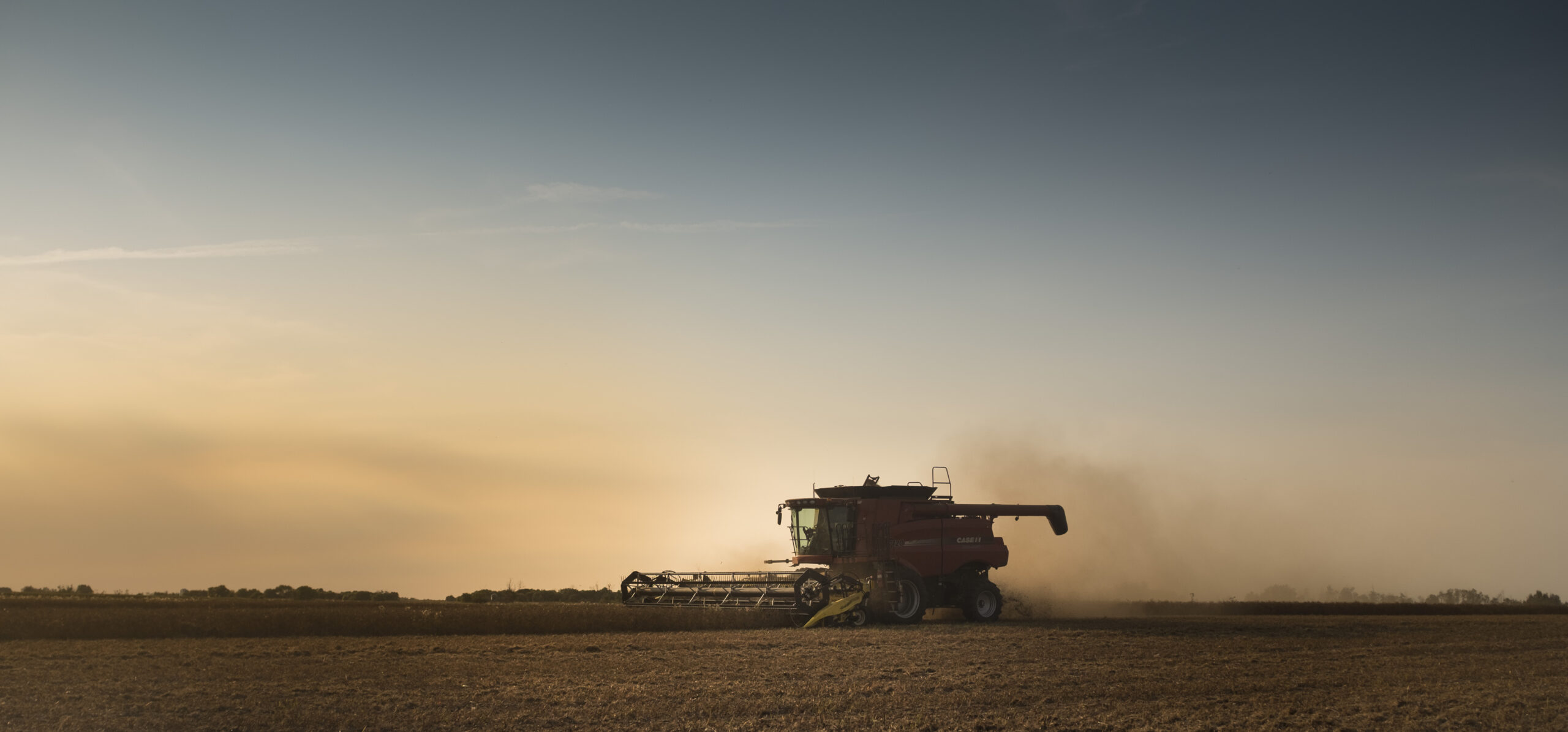Fenugreek is later maturing and matures about the same time as late wheat varieties. Fenugreek grown for seed should be left in the field until fully mature, usually after a killing frost. It is less impacted by the environment as fall rains and frosts will not affect the quality of reasonably mature seeds.
The plant is erect with seed pods held off the ground and in the top part of the canopy making this crop suitable for straight combining. Under normal harvest conditions, the seed pods are resistant to shattering but under conditions where the plant is mature and sits in snow or excessive periods of moisture, shattering can occur.
A flex header is recommended for direct combing and cylinder or rotor speed of approximately 600–880 revolutions per minute should be effective in removing seeds from the pods. Initial fan speed should be set at 650 to 750.
Average yields reported by Emerald Seeds are 1,949 kilograms per hectare (kg/ha), 29 bushels per acre (bu/ac) or 1,740 pounds per acre (lb/ac) based on 19 years of contracted acres. Other reports from growers under dryland conditions suggest 1,500 kg/ha (1,300 lb/ac) with yields ranging from 150–2,800 kg/ha (130–2,500 lb/ac).
The value of the crop is currently based on the number of seeds after cleaning. There are no discounts for weathered or frozen seed, but some green immature seeds may be removed in the cleaning process.
Storage & Handling
Under cool wet conditions at harvest time, the indeterminate nature of fenugreek can lead to harvest delays and the need to combine at high moisture levels. Aeration fans in storage bins should be used to cool and dry the crop. The safe storage moisture level is 12% but it is important to get the grain cool even at low moisture content. Care must be taken to avoid spoilage in the bin. Fenugreek has been observed to spoil at 15% moisture.



